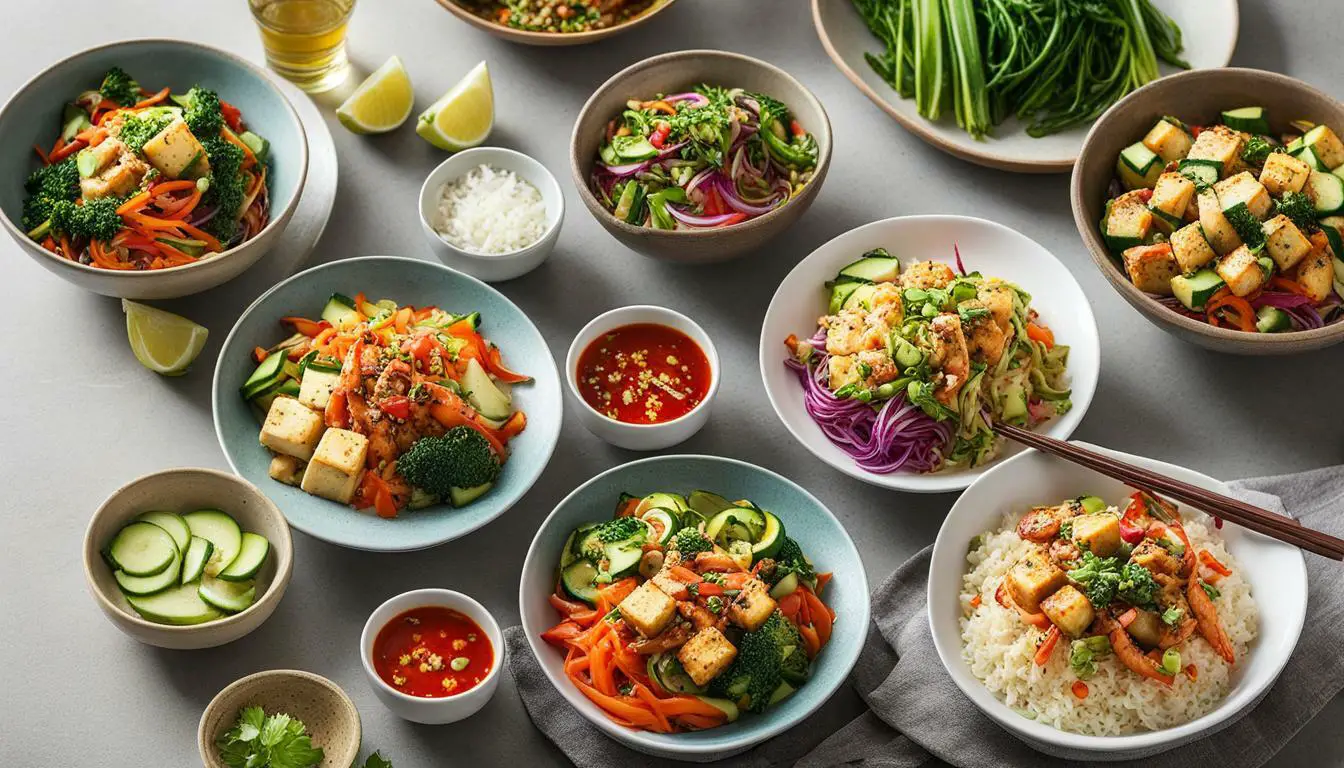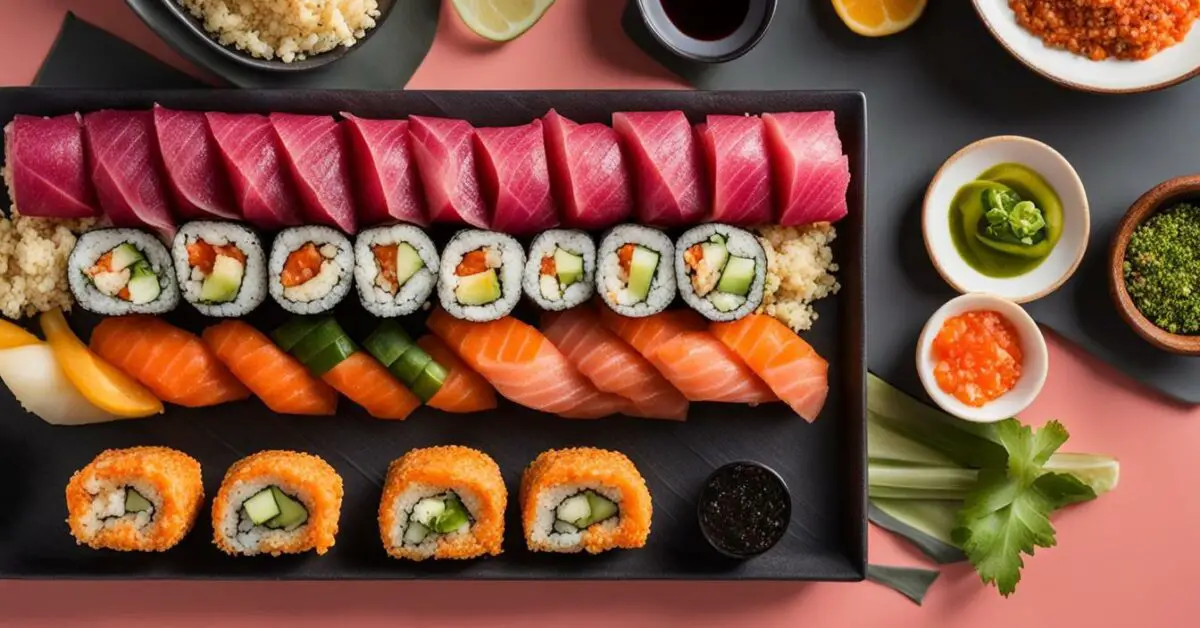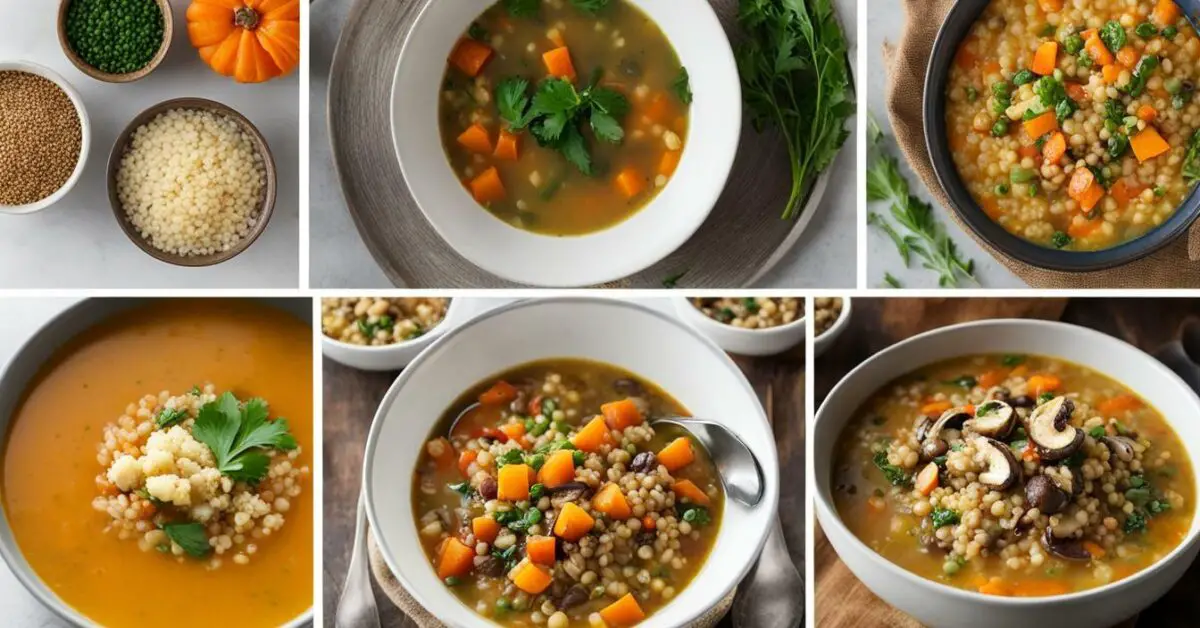
This post may contain affiliate links. Please read my disclosure for more information.
Looking for creative alternatives to rice in your favorite Asian dishes? We’ve compiled a list of the top 10 substitutes that will add a delicious twist to your meals.
There are several rice substitutes that can be used in Asian dishes. Some popular options include quinoa, riced cauliflower, riced broccoli, shirataki rice, couscous, orzo pasta, sweet potatoes, corn grits, barley, buckwheat noodles, and chopped cabbage. These alternatives offer different flavors and textures but can be cooked and used interchangeably with rice in various recipes. Other options include farro, potatoes, zucchini rice, lentils, adlai, chickpea rice, bulgur wheat, and whole wheat bread. These alternatives provide different nutritional profiles and can be used based on personal preferences and dietary needs.
Quinoa, Riced Cauliflower, and Shirataki Rice
Quinoa, riced cauliflower, and shirataki rice are versatile alternatives that can transform your Asian dishes into wholesome and low-carb delights. Whether you’re looking to reduce your carb intake or simply add variety to your meals, these three substitutes offer a range of flavors and textures that will keep your taste buds satisfied.
1. Quinoa:
Quinoa, often referred to as a superfood, is a protein-packed grain that originates from South America. Its nutty flavor and fluffy texture make it an excellent substitute for rice in Asian dishes. To use quinoa as a rice substitute, simply cook it according to the package instructions and incorporate it into your favorite stir-fries, fried rice, or even sushi rolls. Quinoa not only adds a delightful crunch but also boosts the nutritional value of your meals with its high fiber and essential amino acid content.
2. Riced Cauliflower:
Riced cauliflower has gained popularity as a low-carb alternative to rice in recent years. This versatile ingredient can be made by finely chopping or grating cauliflower into rice-like grains. It absorbs flavors well and can be used in various Asian recipes, including fried rice, stir-fries, and even as a base for sushi. Riced cauliflower offers a similar texture to rice while being significantly lower in carbs and calories. It’s also an excellent source of vitamins and minerals, making it a healthy addition to your meals.
3. Shirataki Rice:
Shirataki rice, also known as konjac rice, is a traditional Japanese ingredient made from konjac flour. It is a translucent, gelatinous substitute that closely resembles the texture of rice. Shirataki rice has a neutral taste but readily absorbs the flavors of the dishes it is cooked with, making it an ideal substitute in Asian cuisine. It is incredibly low in carbs and calories, making it suitable for those following a low-carb or calorie-restricted diet. To use shirataki rice, simply rinse it thoroughly, cook it for a few minutes, and incorporate it into your favorite Asian recipes.
By experimenting with quinoa, riced cauliflower, and shirataki rice, you can add new dimensions of taste and texture to your Asian dishes while keeping them healthy and satisfying. These alternatives not only provide a low-carb option for those watching their intake but also bring a delightful twist to traditional recipes. So, go ahead and give these substitutes a try, and enjoy the flavors of Asia in a whole new way!
Couscous, Sweet Potatoes, and Barley
Looking to add a unique twist to your Asian-inspired dishes? Couscous, sweet potatoes, and barley are fantastic options that bring new dimensions to traditional recipes. These versatile ingredients not only provide a change in flavor and texture, but they also offer additional nutritional benefits.
Couscous, a staple in North African cuisine, is small granules of durum wheat that can be cooked quickly and easily. Its light and fluffy texture make it an excellent substitute for rice. When combined with Asian flavors and spices, couscous becomes a delectable addition to stir-fries, curries, and even sushi rolls.
Sweet potatoes, with their natural sweetness and vibrant color, are another great alternative. Rich in vitamins and fiber, sweet potatoes add a hearty and satisfying element to Asian dishes. Whether roasted, mashed, or used in noodle form, these versatile tubers elevate the overall taste and nutritional profile.
Barley, a nutritious whole grain, offers a chewy texture and nutty flavor that pairs well with Asian seasonings. Swap out rice for barley in fried rice or use it as a base for savory grain bowls. With its high fiber content and ability to keep you feeling full, barley is a wholesome choice that doesn’t compromise on taste.
FAQ
Q: Can quinoa be used as a substitute for rice in Asian dishes?
A: Yes, quinoa can be used as a substitute for rice in Asian dishes. It offers a nutty flavor and slightly crunchy texture that can add a unique twist to traditional recipes.
Q: How do you prepare riced cauliflower?
A: Riced cauliflower can be prepared by grating or processing cauliflower into small rice-like pieces. It can then be cooked in a skillet or steamed until tender. Riced cauliflower is a low-carb alternative to rice that absorbs flavors well.
Q: What is shirataki rice, and how is it used in Asian dishes?
A: Shirataki rice is made from the konjac yam and is very low in calories and carbohydrates. It has a gelatinous texture and is often used as a substitute for rice in Asian dishes. It can be cooked and seasoned in a similar way to regular rice.
Q: Can couscous be used as a rice substitute in Asian dishes?
A: Yes, couscous can be used as a rice substitute in Asian dishes. It has a light and fluffy texture and can be cooked quickly. Couscous pairs well with various Asian flavors and can be a versatile addition to your recipes.
Q: How can sweet potatoes be incorporated into Asian dishes instead of rice?
A: Sweet potatoes can be used in Asian dishes by either cubing and stir-frying them as a rice substitute or by spiralizing them into noodles. They add a natural sweetness and hearty texture to your meals.
Q: Is barley a suitable substitute for rice in Asian cooking?
A: Yes, barley can be used as a substitute for rice in Asian cooking. It has a chewy texture and nutty flavor that complements many Asian dishes. Barley can be cooked and used in a similar way to rice, providing a nutritious alternative.


